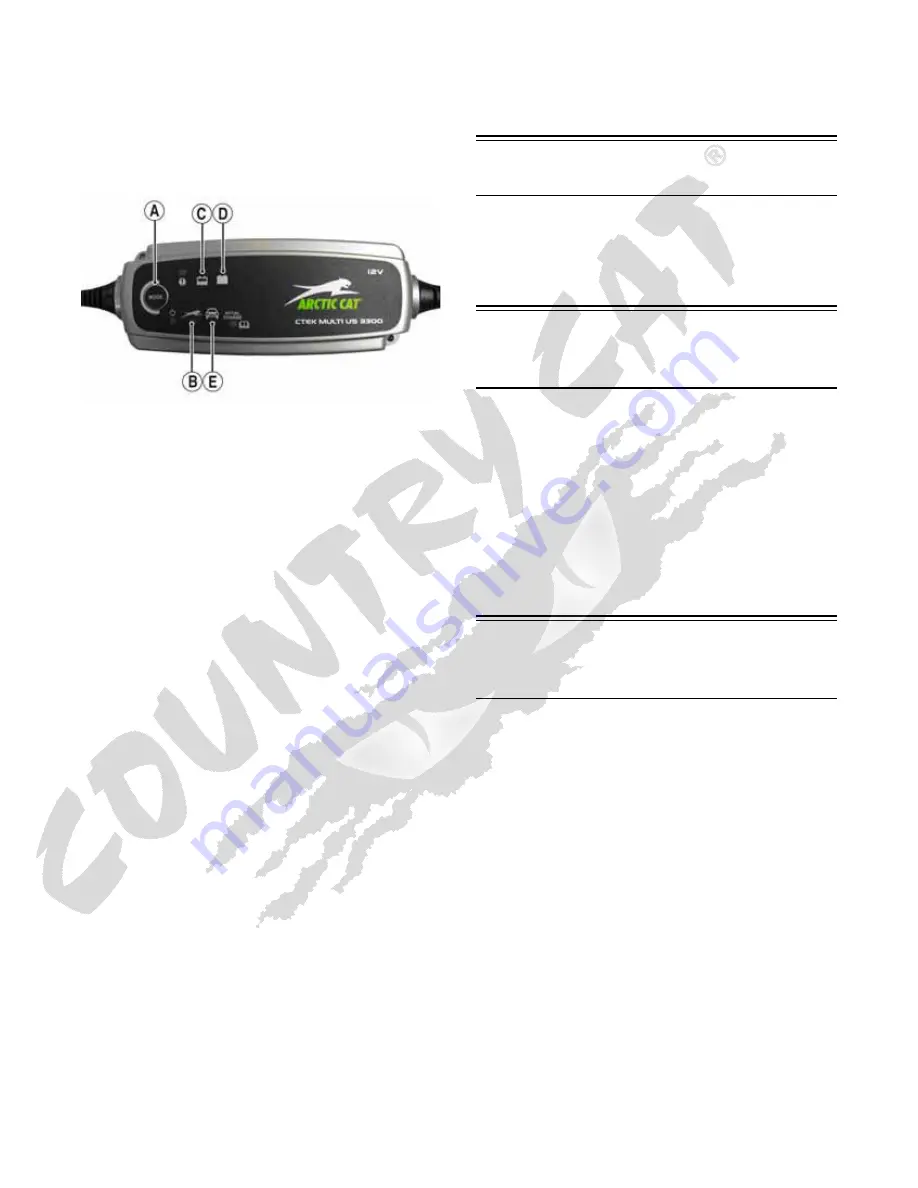
194
NOTE: The maintainer/charger will charge the bat-
tery to 95% capacity at which time the Maintenance
Charge Indicator (D) will illuminate and the main-
tainer/charger will change to pulse/float mainte-
nance. If the battery falls below 12.9 DC volts, the
charger will automatically start again at the first step
of the charge sequence.
3300A
NOTE: Not using a battery charger with the proper
float maintenance will damage the battery if con-
nected over extended periods.
Charging
NOTE: Arctic Cat recommends the use of the CTEK
Multi US 800 or the CTEK Multi US 3300 for battery
maintenance charging.
1. Be sure the battery and terminals have been cleaned
with a baking soda and water solution.
NOTE: The sealing strip should NOT be removed
and NO fluid should be added.
2. Be sure the charger and battery are in a well-venti-
lated area. Be sure the charger is unplugged from the
110-volt electrical outlet.
3. Connect the red terminal lead from the charger to the
positive terminal of the battery; then connect the
black terminal lead of the charger to the negative ter-
minal of the battery.
4. Plug the charger into a 110-volt electrical outlet.
5. By pushing the Mode button (A) on the left side of
the charger, select the Normal Charge Icon (E). The
Normal Charge Indicator (C) should illuminate on
the upper left portion of the charger.
6. The battery will charge to 95% of its capacity at
which time the Maintenance Charge Indicator (D)
will illuminate.
NOTE: For optimal charge and performance, leave
the charger connected to the battery for a minimum 1
hour after the Maintenance Charge Indicator (D) illu-
minates. If the battery becomes hot to the touch, stop
charging. Resume after it has cooled.
7. Once the battery has reached full charge, unplug the
charger from the 110-volt electrical outlet.
NOTE: If, after charging, the battery does not per-
form to operator expectations, bring the battery to an
authorized Arctic Cat dealer for further troubleshoot-
ing.
RPM Limiter
NOTE: The ATV is equipped with an ECM that cuts
fuel flow when maximum RPM is approached. When
the RPM limiter is activated, it could be misinter-
preted as a high-speed misfire.
Testing Electrical
Components
All of the electrical tests should be made using the Fluke
Model 77 Multimeter and when testing peak voltage, the
Peak Voltage Reading Adapter must be used. If any other
type of meter is used, readings may vary due to internal
circuitry. When troubleshooting a specific component,
always verify first that the fuse(s) are good, that the
bulb(s) are good, that the connections are clean and tight,
that the battery is fully charged, and that all appropriate
switches are activated.
NOTE: For absolute accuracy, all tests should be
made at room temperature of 68° F.
Accessory
Receptacle/Connector
NOTE: This test procedure is for either the recepta-
cle or the connector.
VOLTAGE
1. Turn the ignition switch to the ON position; then set
the meter selector to the DC Voltage position.
2. Connect the red tester lead to the red/white wire or
the positive connector; then connect the black tester
lead to ground.
3. The meter must show battery voltage.
NOTE: If the meter shows no battery voltage, trou-
bleshoot the battery, fuse, receptacle, connector, or
the main wiring harness.
















































